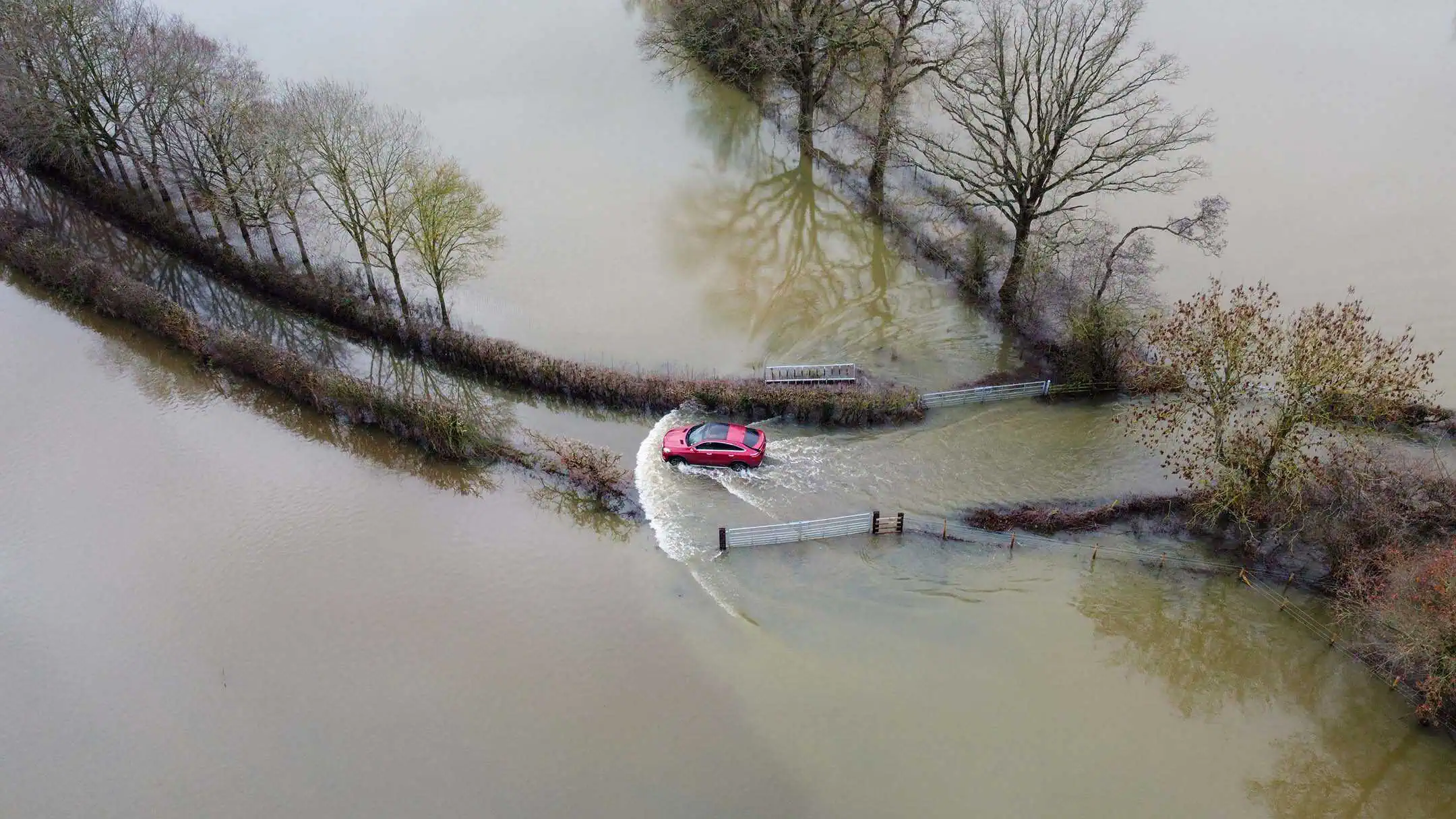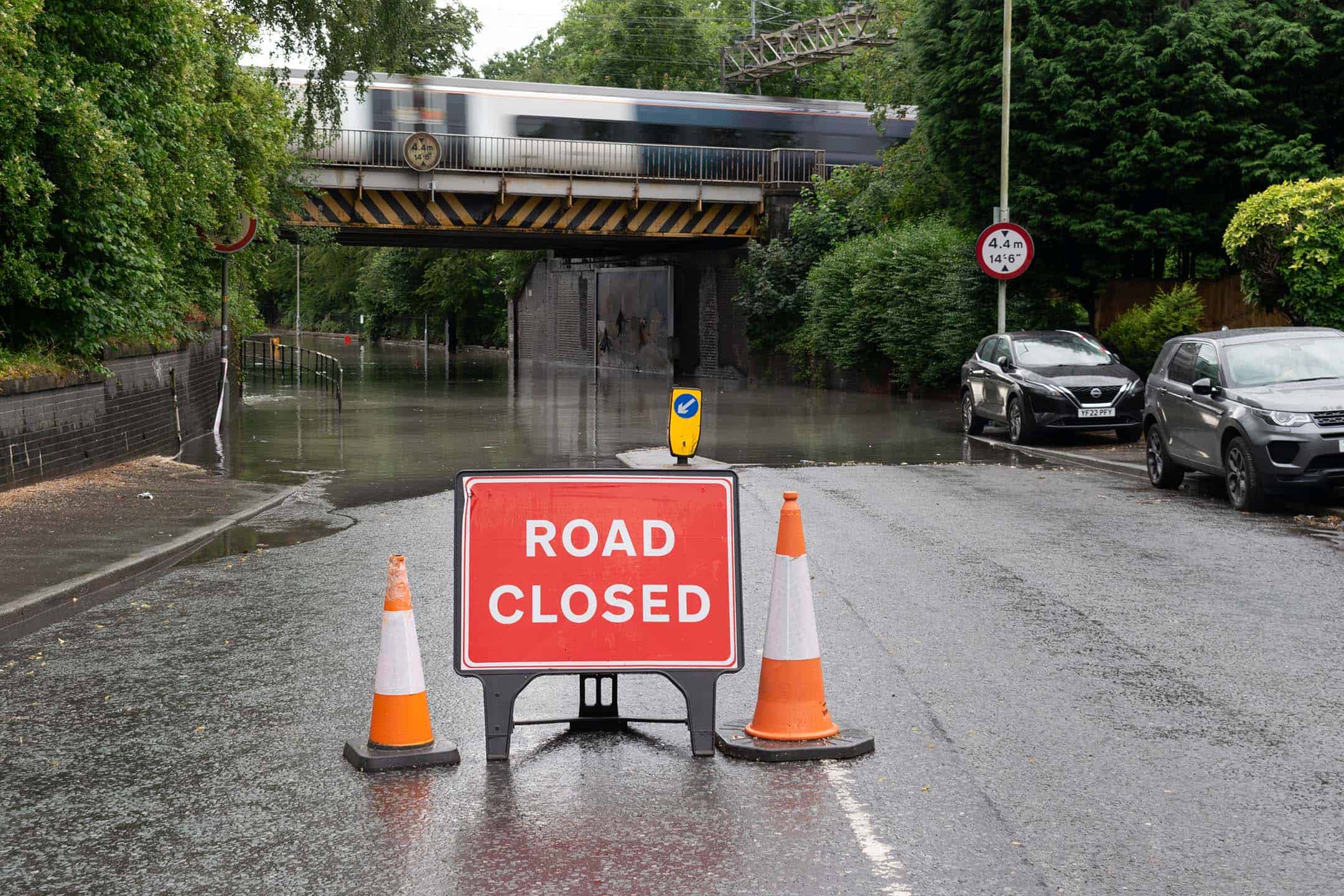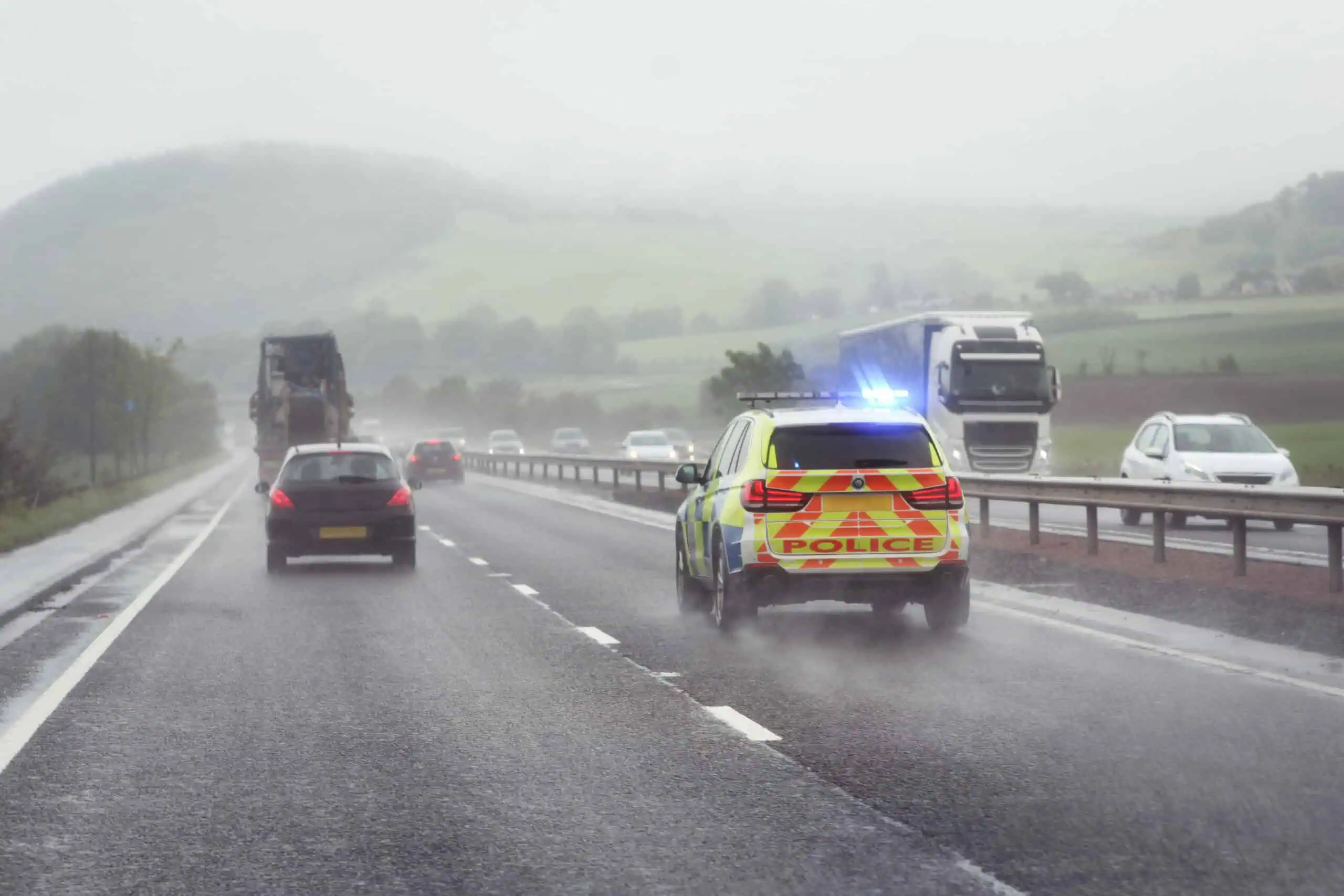How to drive through flood water safely

Roads
Vulnerable Users
Driving Law
Breakdowns
Driving Menu
Driving can be challenging when waterways burst their banks and roads become impassable
Severe flooding check before you go
Before you travel in severe weather conditions, keep up to date with the latest information.
- Met Office – for all weather warnings
- Environment Agency – for all flood-related warnings
A car engine is not waterproof
Flood water can ruin the engine and make your car a write-off.
Your car engine is likely to break down if you drive through water that is too deep if water is sucked into the engine, causing damage to the engine parts – especially the piston rods and valves.
Your car engine will need replacing and depending on the car’s age; it may be a write-off.

Hey did you know?
Unless you‘re driving a high-riding 4×4, the maximum depth most experts advise you drive a standard car through is 10cm. Modern cars are generally water-tight so they can start to float when driven through water that’s only 30cm deep.

Driving through flood water
If you encounter flood water, it’s simple: don’t drive through it unless you are sure the water is not too deep for your car.
Drive slowly and steadily to avoid creating a bow wave, and after leaving the water always test your brakes as soon as you can.
Never try driving through fast-moving water such as at a flooded bridge your car could be swept away.
- Be careful even when the water looks shallow. Water hides dips in the road.
- It only takes 6″ (15 cm) of water to reach the bottom of most cars sufficient to stall the car, or you might even lose control.
- A depth of just 1′ (30 cm) of flood water can be enough to move your car, while a depth of 2′ (60 cm) of moving water can be sufficient to sweep away most vehicles.
Accidents do happen in flood water
A third of all flood-related deaths are by drowning in a vehicle, but even strong swimmers will find difficulty once they are in fast-moving floods.
- In flood water, 1 m deep or waist high at a flow of 1 m/s (2 mph) can cause anyone difficulty standing. By the time it reaches 1.8 m/s (4 mph) everyone will be washed off their feet.
- After 20 minutes in water at a temperature of 12°C, the deep muscle of your forearm would drop to 27°C causing a 30% reduction in muscle strength.
- When the speed of flood water doubles, the force exerted on you is quadrupled.
- Flood water can be contaminated and carry diseases.
Just don’t let yourself get into position – it’s dangerous and could endanger your life.

Warning!
Flood water also contains hidden hazards which can damage your car, and just an egg-cupful of water sucked into your car’s engine will lead to severe damage.